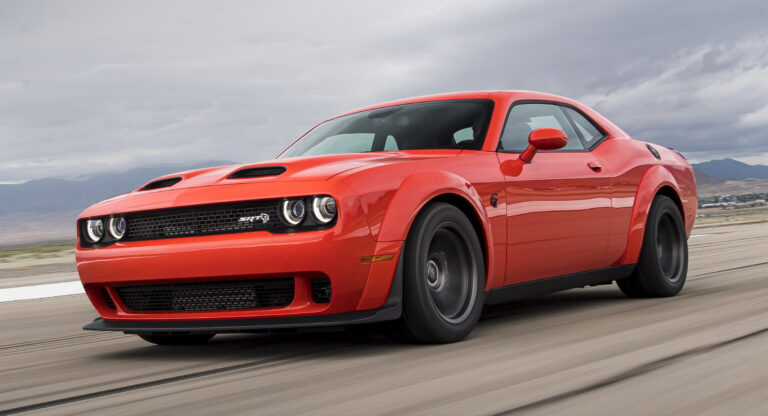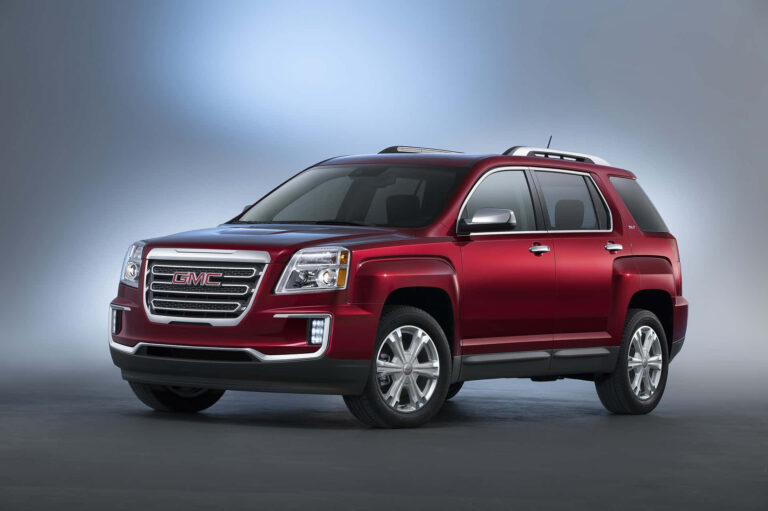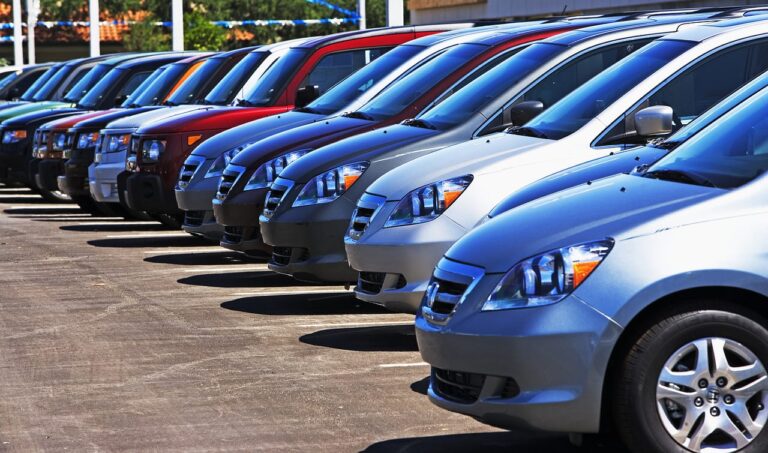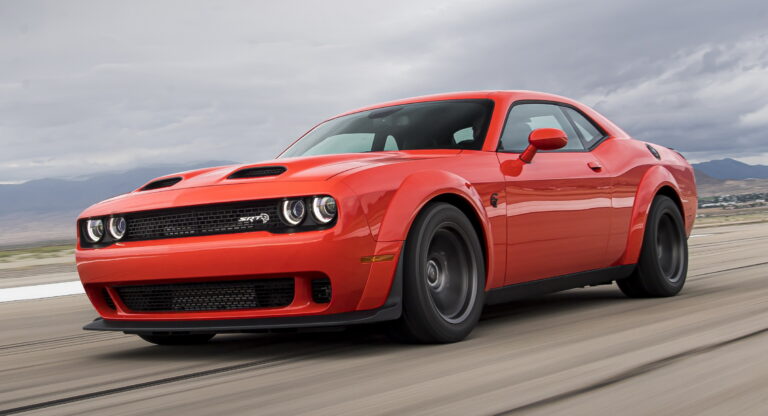How Much Does A Scania Truck Cost? Unveiling the Price Tag of a Premium Heavy-Duty Vehicle
How Much Does A Scania Truck Cost? Unveiling the Price Tag of a Premium Heavy-Duty Vehicle cars.truckstrend.com
Scania trucks are synonymous with power, reliability, efficiency, and driver comfort in the heavy-duty vehicle industry. From the bustling construction site to the open highway, a Scania is often the preferred choice for businesses and owner-operators seeking a premium, robust, and technologically advanced workhorse. However, the question that inevitably arises for prospective buyers is: "How much does a Scania truck cost?" The answer, as with any sophisticated piece of machinery, is far from a simple figure. It’s a complex equation influenced by a myriad of factors, from the specific model and configuration to optional extras, market conditions, and even the choice between new and used.
This comprehensive guide will delve into the various layers of Scania truck pricing, helping you understand the initial purchase cost, the factors that drive it up or down, and the broader financial considerations that contribute to the total cost of ownership. Whether you’re a seasoned fleet manager or an aspiring owner-operator, navigating the intricacies of Scania pricing is crucial for making an informed investment.
How Much Does A Scania Truck Cost? Unveiling the Price Tag of a Premium Heavy-Duty Vehicle
Understanding the Base Price: New Scania Trucks
At its core, the price of a new Scania truck begins with its model series. Scania offers a modular system, allowing for extensive customization, but each series serves a primary purpose and comes with a distinct starting price point. These series include:
- P-series: Often configured for urban distribution, regional transport, and certain construction applications. Known for its compact cab and excellent visibility.
- G-series: A versatile all-rounder suitable for a wide range of applications, including regional haulage, construction, and waste management. Offers a balance of comfort and practicality.
- R-series: The workhorse for long-haul transport, offering superior comfort and a spacious cabin for extended journeys.
- S-series: Scania’s premium flagship, boasting the largest and most luxurious flat-floor cab, designed for ultimate driver comfort on long-distance routes.
- XT-series: A robust and durable range designed specifically for demanding conditions in construction, mining, and heavy-duty transport. Can be based on P, G, R, or S series cabs with reinforced components.
- L-series: Designed for urban environments, focusing on low entry, excellent visibility, and maneuverability for city distribution and waste collection.

The base price for an entry-level Scania rigid truck (e.g., P-series for distribution) might start in the range of €90,000 to €120,000 (or approximately $100,000 to $130,000 USD). For a standard R-series long-haul tractor unit, the starting price could be anywhere from €120,000 to €150,000 (or $130,000 to $165,000 USD). The top-tier S-series, especially with a powerful V8 engine, can easily start from €150,000 and go well over €200,000 (or $165,000 to over $220,000 USD) before significant optional extras.
It’s crucial to remember that these are just starting points. The true cost rapidly escalates as specifications are added.

Key Factors Influencing Scania Truck Costs
The modular design of Scania trucks allows for immense customization, and each choice directly impacts the final price. Understanding these factors is key to tailoring a truck to your needs and budget:
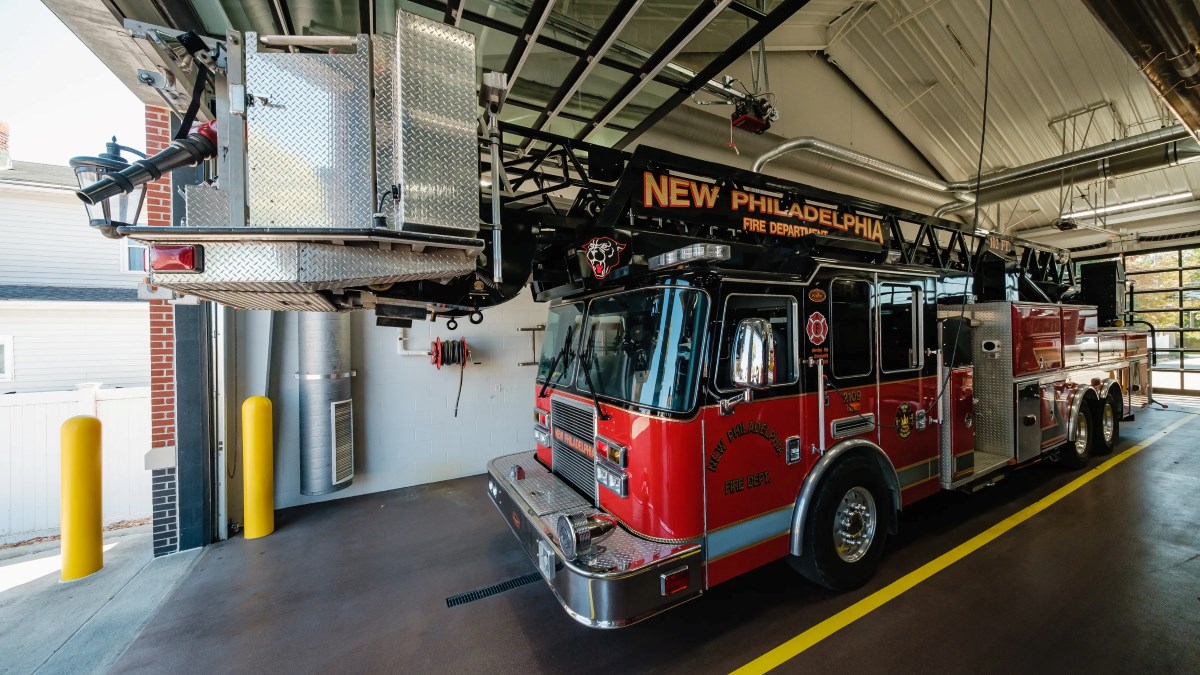
Engine & Powertrain:
- Horsepower (HP) and Torque: Scania offers a wide range of engines, from efficient 7-liter units to powerful 16-liter V8s. Higher horsepower and torque figures typically command a higher price. For example, upgrading from a 450 HP engine to a 500 HP or a V8 770 HP unit significantly increases cost.
- Gearbox: While Scania’s Opticruise automated manual transmission is standard on many models, specific versions or specialized gearboxes for heavy haulage might add to the cost.
- Axle Configurations: The number of axles (e.g., 4×2, 6×2, 6×4, 8×4) and whether they are driven or lifting axles dramatically affects the price. A 6×4 heavy-duty tractor unit will be considerably more expensive than a standard 4×2.
-
Cabin Type and Features:
- Size and Height: Day cabs are the most affordable, followed by sleeper cabs of various heights (Low, Normal, Highline, Topline, and the S-series flat-floor cab). Larger, more spacious, and taller cabs are more expensive.
- Interior Trim and Amenities: Premium interior packages, leather seats, integrated navigation, advanced infotainment systems, refrigerators, microwaves, and extra storage solutions all add to the price.
- Aerodynamics: Roof spoilers, side skirts, and other aerodynamic aids improve fuel efficiency but come at an additional cost.
-
Chassis Configuration and Application-Specific Equipment:
- Tractor Unit vs. Rigid: Tractor units (for pulling trailers) generally have a different cost structure than rigid chassis (designed to have a body mounted directly on them, like tippers, tankers, or curtain-siders).
- Specialized Equipment: Power Take-Off (PTO) units, hydraulic systems, heavy-duty suspension, fifth wheels, specialized fuel tanks, additional air tanks, and specific body preparations (e.g., for concrete mixers, cranes, or refuse compactors) add significant cost.
- Safety Features (ADAS): Advanced Driver Assistance Systems (ADAS) like Adaptive Cruise Control, Lane Departure Warning, Emergency Braking, and blind-spot detection enhance safety but are often optional extras.
-
Emissions Standards and Technology:
- Trucks meeting the latest emission standards (e.g., Euro 6 in Europe) often incorporate more advanced and costly engine technologies (like SCR and DPF systems) compared to older standards.
-
Regional Pricing, Taxes, and Dealer Specifics:
- Geographical Location: Prices vary significantly by country due to import duties, local taxes (like VAT/GST), transportation costs, and market demand. A Scania in Europe will have a different price than one in Australia or South Africa.
- Dealer Markups and Promotions: Individual dealerships may offer different pricing, promotions, or bundled deals.
- Currency Fluctuations: For international buyers, exchange rates can play a role.
The Second-Hand Scania Market: A Cost-Effective Alternative
For many businesses and owner-operators, purchasing a brand-new Scania might be beyond their immediate budget. The second-hand market offers a viable and often very cost-effective alternative, allowing access to Scania’s renowned quality at a significantly reduced upfront cost.
Benefits of Buying Used:
- Lower Upfront Cost: The most obvious advantage. A truck that is a few years old will have absorbed the steepest part of its depreciation.
- Immediate Availability: Used trucks are typically available immediately, unlike new trucks which often have lead times for manufacturing and delivery.
- Proven Track Record: For a well-maintained used truck, you can often assess its real-world performance and reliability.
Factors Influencing Used Scania Prices:
- Age and Mileage: These are the primary determinants. A younger truck with lower mileage will command a higher price.
- Condition: The overall physical and mechanical condition is paramount. This includes the engine, gearbox, chassis, cab interior, and tire wear.
- Service History: A complete and verifiable service history from authorized Scania dealers or reputable workshops adds significant value, indicating proper maintenance.
- Previous Application: Trucks used for heavy-duty applications (e.g., logging, mining) may show more wear than those used for light long-haul work.
- Specifications: The original specifications (engine size, cabin type, special equipment) still play a role in the used market. A high-spec truck will retain more value.
- Market Demand: Certain models or configurations might be in higher demand, affecting their used price.
Estimated Used Price Ranges:
- 3-5 Year Old Scania (good condition, ~400,000-700,000 km): Prices can range from €40,000 to €80,000 ($45,000 to $90,000 USD) depending on the model, specification, and overall condition.
- 5-8 Year Old Scania (decent condition, ~700,000-1,000,000 km): Expect prices in the range of €25,000 to €50,000 ($28,000 to $55,000 USD).
- 8+ Year Old Scania (high mileage, still operational): These can be found for under €25,000 ($28,000 USD), often as project vehicles or for specific, less demanding tasks.
Tips for Buying Used:
- Thorough Inspection: Always conduct a pre-purchase inspection by an independent, qualified mechanic.
- Check Service Records: Verify the truck’s maintenance history.
- Test Drive: Assess performance, listen for unusual noises, and check all systems.
- Be Wary of "Too Good to Be True" Deals: Extremely low prices often indicate underlying issues.
Beyond the Purchase Price: Total Cost of Ownership (TCO)
While the initial purchase price is a significant hurdle, it’s merely one component of owning a Scania truck. Fleet managers and owner-operators must consider the Total Cost of Ownership (TCO), which encompasses all expenses incurred throughout the truck’s operational life. Scania trucks are designed with TCO in mind, often offering competitive running costs despite a higher initial outlay.
Key TCO factors include:
- Fuel Consumption: Scania engines are known for their fuel efficiency, especially with Opticruise and features like Eco-roll. Fuel is typically the largest operational expense.
- Maintenance & Servicing: Scheduled maintenance, unforeseen repairs, and the cost of spare parts contribute significantly. Scania’s modular design often simplifies repairs, and service contracts can help manage these costs.
- Tires: A major recurring expense, influenced by mileage, load, road conditions, and driver habits.
- Insurance: Varies based on the truck’s value, type of operation, geographical area, and the driver’s history.
- Depreciation: While a truck is an asset, it depreciates over time. Scania trucks generally hold their value well compared to some competitors due to their reputation for longevity and reliability.
- Financing Costs: If you finance the purchase, interest payments are a substantial part of the TCO.
- Road Taxes & Levies: Depending on the region, weight, and emissions, various taxes and tolls apply.
- Driver Wages and Training: While not directly a truck cost, it’s a major operational cost that must be considered when calculating the profitability of a transport operation.
Financing Options for Scania Trucks
Acquiring a Scania truck often involves substantial capital, making financing a crucial consideration. Several options are available:
-
Outright Purchase:
- Requires significant upfront capital.
- Avoids interest payments.
- Full ownership from day one.
-
Loans (Bank Loans / Manufacturer Financing):
- Bank Loans: Traditional loans from commercial banks. Terms vary based on creditworthiness.
- Scania Finance: Scania’s own financial services arm offers tailored solutions, often with competitive rates and terms, understanding the nuances of truck ownership.
- Benefits: Ownership of the asset, fixed monthly payments, potential tax deductions on interest.
- Considerations: Interest rates, down payment requirements, loan duration.
-
Leasing:
- Financial Lease (Hire Purchase): Similar to a loan, you pay installments over a period with the option to purchase the truck at the end of the term for a residual value. The asset appears on your balance sheet.
- Operational Lease (Contract Hire): Essentially renting the truck for a fixed period. Payments cover usage, and at the end of the term, you return the truck. Maintenance and servicing can often be bundled into the lease.
- Benefits: Lower upfront costs, fixed monthly payments, potential tax advantages (payments can be treated as operating expenses), flexibility to upgrade to newer models.
- Considerations: No ownership at the end of an operational lease, mileage restrictions, condition clauses.
Practical Advice for Financing:
- Assess Your Cash Flow: Determine what monthly payments you can comfortably afford.
- Compare Offers: Get quotes from multiple lenders, including Scania Finance.
- Understand Terms: Pay close attention to interest rates, fees, down payments, balloon payments (if applicable), and any penalties for early repayment or exceeding mileage limits.
- Consider TCO in Financing: A slightly higher purchase price might be justified if the truck offers significantly lower TCO.
Practical Advice and Actionable Insights
Purchasing a Scania truck, whether new or used, is a significant investment. Here’s how to approach it strategically:
- Define Your Needs Clearly: Before even looking at prices, precisely determine your application (long-haul, distribution, construction), required payload, typical routes, and desired comfort levels. This will help narrow down the series and specifications.
- Prioritize Specifications: Identify "must-have" features (e.g., specific engine power, axle configuration for heavy loads) versus "nice-to-have" luxuries. Every extra adds to the cost.
- Research Thoroughly: Explore Scania’s official website, brochures, and independent reviews. Understand the modular system and what components are interchangeable or upgradeable.
- Get Multiple Quotes: Contact several authorized Scania dealerships. Prices can vary, and dealers might offer different package deals or financing options.
- Always Consider Total Cost of Ownership (TCO): Don’t be swayed solely by the lowest purchase price. A slightly more expensive Scania might offer superior fuel efficiency, lower maintenance costs, and better resale value, leading to a lower TCO over its lifespan.
- Negotiate: Always negotiate the price, especially for new trucks. Dealers often have some flexibility. For used trucks, leverage inspection findings to negotiate.
- Factor in After-Sales Support: Scania has an extensive service network. Consider the availability and quality of service and parts in your operating region. A good service contract can provide peace of mind and predictable maintenance costs.
Scania Truck Estimated Price Table (Illustrative Ranges)
Disclaimer: Prices for Scania trucks are highly variable and depend significantly on the specific configuration, optional extras, engine choice, cabin type, regional taxes, dealer promotions, and prevailing market conditions. The figures below are illustrative estimates for general guidance only and do not represent definitive pricing. Always obtain a precise quote from an authorized Scania dealership.
| Scania Model Series & Type | Key Characteristics | Estimated New Price Range (EUR/USD) | Estimated Used Price Range (EUR/USD) (3-7 years old, good condition) |
|---|---|---|---|
| P-series (Rigid) | Urban/Regional Distribution, Construction, Waste | €90,000 – €130,000 / $100,000 – $145,000 | €30,000 – €60,000 / $33,000 – $67,000 |
| G-series (Rigid/Tractor) | Versatile, Regional Haulage, Construction | €100,000 – €150,000 / $110,000 – $165,000 | €35,000 – €70,000 / $39,000 – $78,000 |
| R-series (Tractor) | Long-Haul, Standard Sleeper Cab, Efficient | €120,000 – €180,000 / $130,000 – $200,000 | €40,000 – €90,000 / $45,000 – $100,000 |
| S-series (Tractor) | Premium Long-Haul, Flat Floor Cab, Max Comfort | €150,000 – €220,000+ / $165,000 – $245,000+ | €50,000 – €110,000 / $55,000 – $122,000 |
| XT-series (Rigid/Tractor) | Heavy-Duty, Off-Road, Construction (P, G, R, S bases) | €130,000 – €250,000+ / $145,000 – $280,000+ | €45,000 – €100,000 / $50,000 – $110,000 |
| L-series (Rigid) | Urban Operations, Low Entry, High Visibility | €110,000 – €160,000 / $120,000 – $175,000 | Limited used market (newer series) |
| Common Optional Add-ons (Est.) | V8 Engine Upgrade, Premium Interior, Advanced Safety, PTO | €10,000 – €50,000+ / $11,000 – $55,000+ | Value already factored into used price, but impacts initial depreciation |
Frequently Asked Questions (FAQ)
Q1: Is Scania more expensive than other truck brands?
A1: Scania is generally positioned as a premium brand, and its initial purchase price can be higher than some competitors. However, many operators find that Scania’s reputation for reliability, fuel efficiency, strong resale value, and robust TCO (Total Cost of Ownership) often justifies the initial investment over the long term.
Q2: Can I heavily customize a Scania truck?
A2: Absolutely. Scania’s modular production system is designed for extensive customization. You can choose from a wide array of engines, gearboxes, chassis configurations, cabin types, and a vast list of optional features and accessories to build a truck tailored precisely to your operational needs.
Q3: What is the typical lifespan of a Scania truck?
A3: With proper maintenance and servicing, Scania trucks are renowned for their longevity. It’s common for them to comfortably achieve over 1 million kilometers (620,000 miles) and often much more, making them a durable investment, especially for long-haul applications.
Q4: Does Scania offer its own financing options?
A4: Yes, Scania Finance provides a range of financial solutions, including loans, financial leases, and operational leases. They often offer competitive terms tailored to the specific needs of the transport industry.
Q5: Where can I get an accurate quote for a Scania truck?
A5: The most accurate and up-to-date pricing can only be obtained from an authorized Scania dealership in your region. They can provide a detailed quote based on your specific configuration requirements and local market conditions.
Q6: What is the "Scania modular system" and how does it affect cost?
A6: Scania’s modular system means that many components are interchangeable across different truck series. This design philosophy helps in standardizing parts, simplifying maintenance, reducing repair times, and potentially lowering the cost of spare parts over the truck’s lifetime. It also allows for greater flexibility in customization during the initial build.
Conclusion
The cost of a Scania truck is not a static number but a dynamic figure influenced by a complex interplay of model choice, detailed specifications, market conditions, and whether you opt for new or used. While the initial investment for a new Scania can be substantial, its reputation for quality, efficiency, driver appeal, and strong residual values often translates into a competitive total cost of ownership over its lifespan.
By thoroughly understanding your operational needs, meticulously researching options, and considering all aspects of TCO, you can make an informed decision that secures a powerful, reliable, and ultimately cost-effective Scania truck for your business. Remember, the true value of a Scania extends far beyond its sticker price, encompassing its performance, durability, and the significant role it plays in driving the profitability of your operations.
-1.png)
